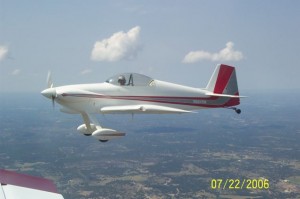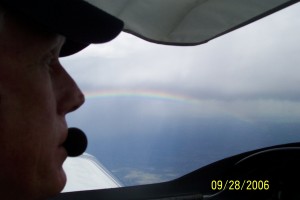The advanced ROTC program required attendance at a two-week summer camp between my junior and senior years. As a pilot candidate, I had to pass a flight physical.
I’m sitting in a chair getting an eye exam from an enlisted guy. He finishes up, and over his shoulder I see 20/20 marked for the right eye and 20/25 for the left. “Whoa,” I say. “Are you sure about that?”
“Yessir. That’s how you test out.”
I motion for him to come closer and whisper, “I need 20/20 in both eyes to remain in the pilot program. Could you please check it again?”
He does, confirms my left eye as slightly below standards, and I leave the exam room with my planned aviation interlude in jeopardy. But I’ve heard that depending on the needs of the Air Force, demand for pilots might allow something less than eagle vision. Maybe I’ll be okay.
Then the flight surgeon gets hold of me. Literally. I cough looking one direction. He tells me to look the other way and cough again. I do that. There’s a pause. “Again,” he says. I cough. Then he calls out, “Hey, Frank! I think we’ve got a live one!” Less-than-acceptable eyesight and a left inguinal hernia terminate my plans to be a USAF pilot.
On the first day of classes of my senior year, I inform my Air Force advisor that I’m quitting the program. He asks me why. I tell him. He stands up, walks to a metal filing cabinet and fishes out a folder with my name stenciled at the top. He flips it open, thumbs to a piece of paper and shows it to me. I stare at it and read a 20/20 notation for both eyes.
But then he points to another bit of news in the folder. I had told the flight surgeon about a dislocated shoulder from playing sandlot football. Concern that I might not be able to reach all the switches on overhead panels in transport airplanes had disqualified me as a pilot candidate.
The advisor stares at me and says, “Don’t ever volunteer information like this. Let them find it.” Then he tells me that the only record of this physical is in his office. “That’s like it never happened. We can schedule you for another. Your left eye is so close that I can show you how to make sure you test out at 20/20.”
And then the kicker: “If you had kept your mouth shut about the shoulder and gotten that hernia fixed over summer break, within the week you could begin flying training for your private license. Looks to me like you’re behind the power curve.”
I’d had enough aerodynamics to recognize the phrase and understand the meaning. I also knew I was a left inguinal hernioplasty and a physical away from shoving the power up, reducing my angle of attack, and flying my way into the cockpit of a USAF trainer.
In January, 1964 as a college senior, I began the Flight Indoctrination Program (FIP). Designed to assess a candidate’s basic aptitude for piloting, FIP paid for training to obtain a private pilot’s license. The Air Force initiated the program to  reduce the washout rate from Undergraduate Pilot Training (UPT) in T-37’s and T-38’s.
reduce the washout rate from Undergraduate Pilot Training (UPT) in T-37’s and T-38’s.
My civilian instructor had logged many hours watching over fledgling aviators, and he knew how to teach specific lessons so that the wisdom became a permanent part of a pilot’s “brain bag.”
We’re practicing touch-and-go’s. On downwind after three nice patterns with no instructor input, as I reach for the flaps he says, “Make this a no-flap.”
Please visit again soon for Part 3 of Beginnings.



